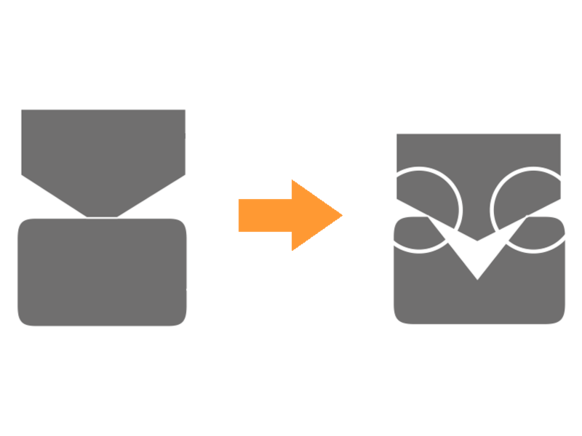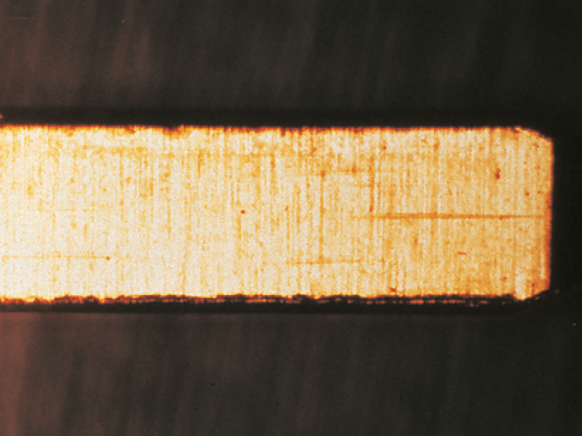
Our unique Tough Contact technique
Four key points
- Tough against dropping!
- Tough against foreign particles and flux!
- Tough against solder rise!
- Tough against corrosive gases!
Bellows contact construction increases resistance to shock and vibrations

Thanks to high-precision curved bending, our bellows contacts have the right amount of spring characteristics, which make the contacts highly resistant to shocks and vibrations. Especially mobile devices need tough contacts as they tend to get dropped by users or their contacts are twisted during mounting. By analyzing the ideal spring shape for the contacts, we discovered the bellows construction and used precision metal processing, one of our core technologies, to bend the contacts precisely into shape.
V notch improves contact reliability and the resistance against entry of foreign particles

By using two edges for the contacting part, the contact pressure per unit area has been increased. Compared to traditional contacts, our bellows contacts’ ability to remove flux and foreign particles has increased. . What is more, bellow contacts actively help to prevent foreign particles from entering.
- 2-point contact area
- Surface contact to edge contact
- Improved contact movement effect before and after V notch passage
- The combination of these effects greatly improves contact reliability (resistance to entry of foreign matter)
Anti-solder-rise efficiency increased due to Ni barrier

To prevent solder from rising, the nickel layer is exposed in the middle part of the socket contacts and acts as a barrier against solder rise. This technique is especially useful as the contacts have an ultra-low profile. The lower the profile, the more contacts are prone to fail from solder creepage.
- Negative effects of solder rise are controlled in contact and contact spring parts.
- Solder remains in the terminals and a stable fillet mold is possible.
- Ni barrier makes the contacts highly resistant to solder creepage.
Improved resistance to corrosion by gas, etc., thanks to porosity treatment

The porosity treatment consists of coating the surface with a very thin film to seal pinholes in the gold plating. We have developed this porosity treatment technology to ensure the same contact reliability for thin gold plating as for thick gold plating.
- Improvement in resistance to corrosion
- Improvement in insertion / removal durability
- Improvement in contact reliability for digital signals



